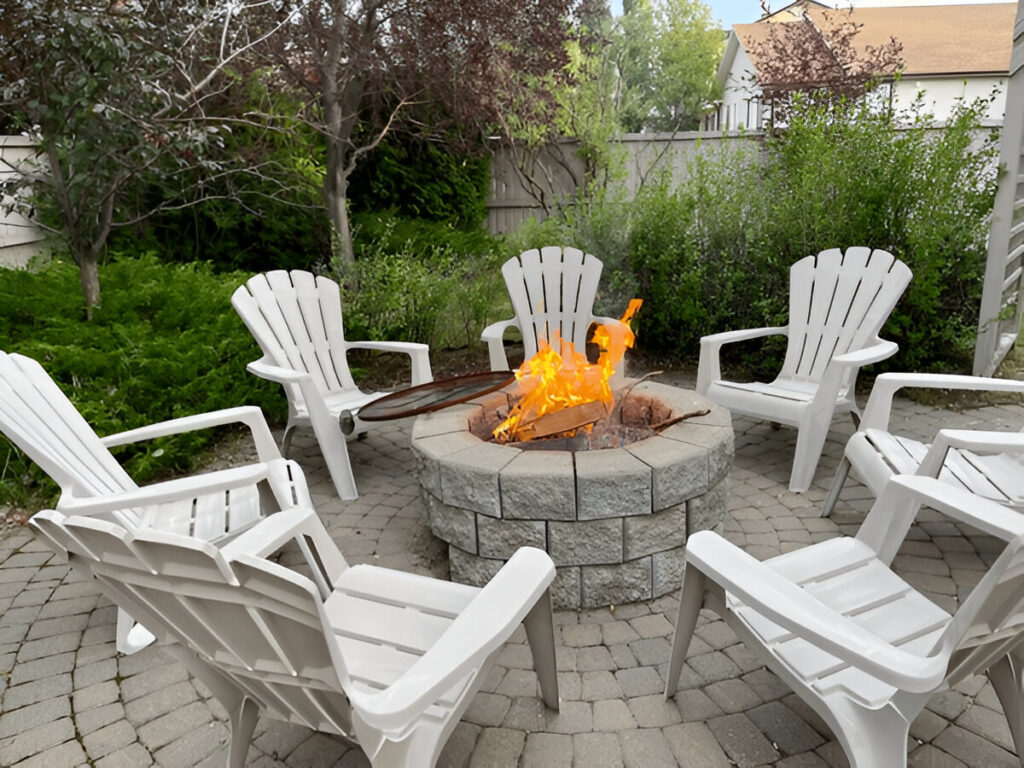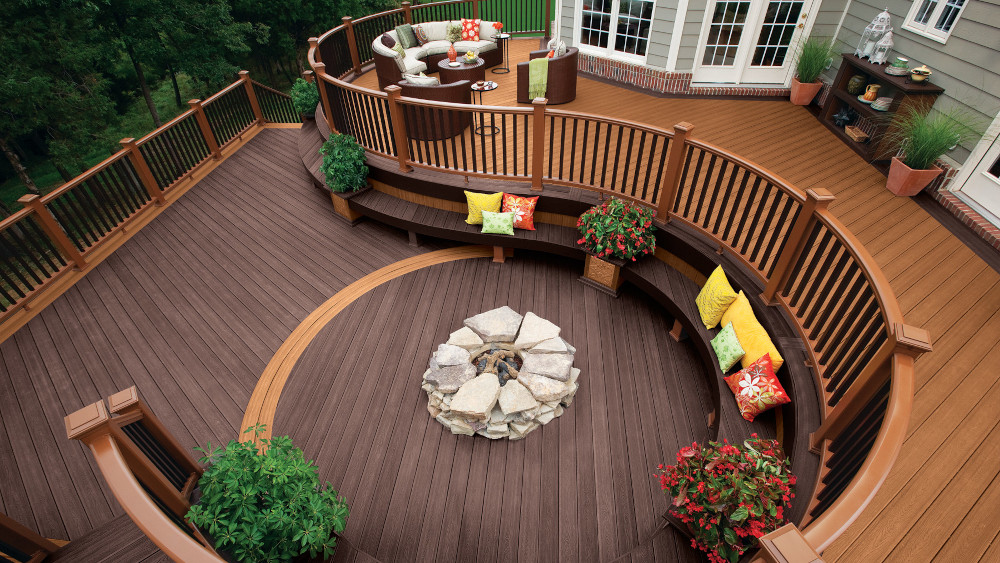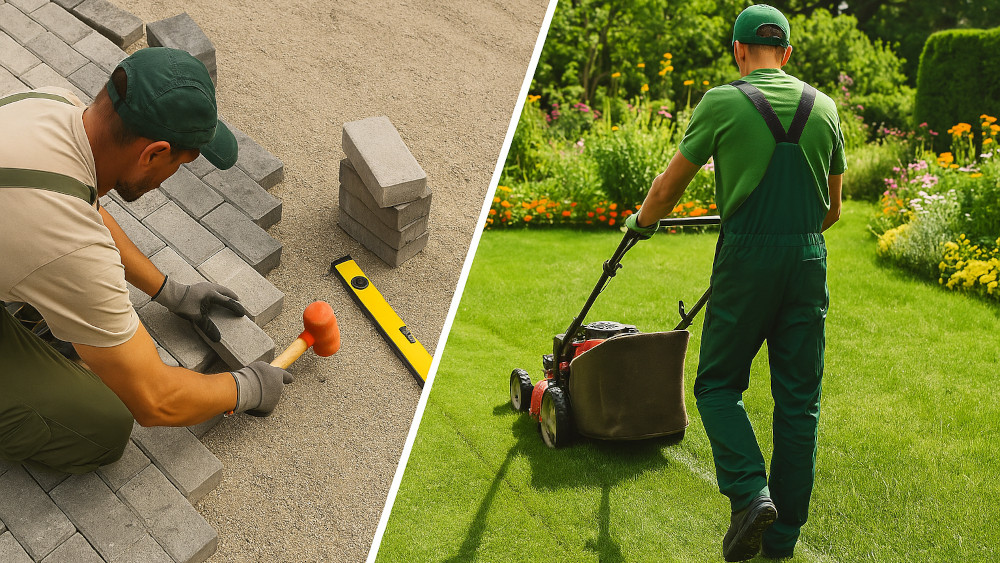Creating a cozy outdoor space is a great way to enhance your backyard’s aesthetics and functionality. Fire pits and outdoor fireplaces provide warmth, ambiance, and an inviting environment for relaxation and entertainment. They also contribute to the overall landscape design, blending well with garden elements, hardscaping, and softscaping features. Whether for small gatherings or enhancing the overall look of your outdoor space, fire pits and fireplaces can transform your backyard into an extension of your living area.
Choosing Between a Fire Pit and an Outdoor Fireplace
When planning a backyard renovation, understanding the difference between a fire pit and an outdoor fireplace is essential. A fire pit is an open structure that allows people to sit around it, making it a social centerpiece. Outdoor fireplaces, on the other hand, provide a more structured design with a chimney that directs smoke away, making them ideal for more formal outdoor settings.
Each option has its advantages, depending on your garden design and landscaping needs. Fire pits generally take up less space and integrate well with various landscape elements, such as pavers and softscaping. Outdoor fireplaces offer a focal point in landscape design, enhancing the overall aesthetics of the space.
Integration with Landscaping Elements
Fire pits and outdoor fireplaces should complement the existing landscape, ensuring they harmonize with other elements such as fences, retaining walls, and garden beds. A well-planned design considers soil composition, drainage, and planting arrangements to maintain a balanced natural environment.
A landscape architect or designer can incorporate fire features seamlessly into the space, ensuring they align with the broader landscape contracting and maintenance strategy. Selecting the right materials, such as cement, pavers, and sand, also plays a key role in durability and aesthetics.
Construction Considerations
Proper construction ensures safety and longevity. Whether building a permanent fixture or installing a prefabricated unit, it is essential to consider aspects like:
- Foundation and Drainage: Proper drainage is necessary to prevent water buildup, which can compromise the integrity of fire pits and fireplaces.
- Material Selection: Fire-resistant materials such as stone, brick, and cement provide durability and safety.
- Placement: Locating fire features away from flammable materials like wooden fences or nearby planting beds helps reduce fire hazards.
- Regulations: Checking local landscaping and home improvement regulations ensures compliance with safety codes.
Enhancing Fire Features with Garden and Hardscaping Elements
Integrating fire features with softscaping and hardscaping improves the overall experience. Some effective strategies include:
1. Garden and Plant Selection
Incorporating plants that complement the design enhances visual appeal. Drought-resistant plants work well in natural landscaping, while flowering plants add seasonal color. When considering planting options, using mulch and compost improves soil health and supports sustainable landscaping practices.
2. Hardscaping and Paving
Using pavers around fire pits creates a defined space, making it easier to maintain. A well-planned hardscaping layout considers seating arrangements and access paths that blend with the overall garden design.
3. Lawn and Weed Control
Maintaining the surrounding lawn area ensures a neat and polished look. Weed control measures, such as using herbicide or natural alternatives, keep unwanted growth at bay. Fertilizer applications support healthy grass growth, preventing bare patches around the fire feature.
4. Fencing and Privacy
Adding fencing around fire pits or outdoor fireplaces enhances privacy and defines boundaries. Wood, metal, or composite fencing options can be selected based on the existing landscape architecture.
Sustainable and Natural Landscaping Considerations
Sustainable landscaping principles play an essential role in designing outdoor fire features. Using biodegradable materials, sourcing local stone, and implementing proper drainage strategies contribute to a more environmentally friendly space.
A thoughtful approach to landscape maintenance ensures that the fire feature remains functional and aesthetically pleasing over time. Pruning surrounding trees and shrubs reduces fire risks while maintaining a well-groomed garden.
Incorporating Additional Outdoor Features
Fire pits and outdoor fireplaces work well with other backyard features. Some additions that enhance usability and appeal include:
- Swimming Pools: A fire feature near a swimming pool creates a striking contrast between water and fire elements.
- Outdoor Kitchens: Combining a fireplace with an outdoor cooking space enhances home improvement possibilities.
- Retaining Walls: Incorporating retaining walls around fire features helps create structured seating or planting spaces.
Fire pits and outdoor fireplaces offer more than just warmth—they enhance backyard aesthetics and functionality. Proper planning ensures seamless integration with landscape elements such as fencing, planting, and hardscaping. By considering soil, drainage, and sustainability factors, homeowners can create a comfortable and inviting outdoor space that aligns with their landscaping vision.


